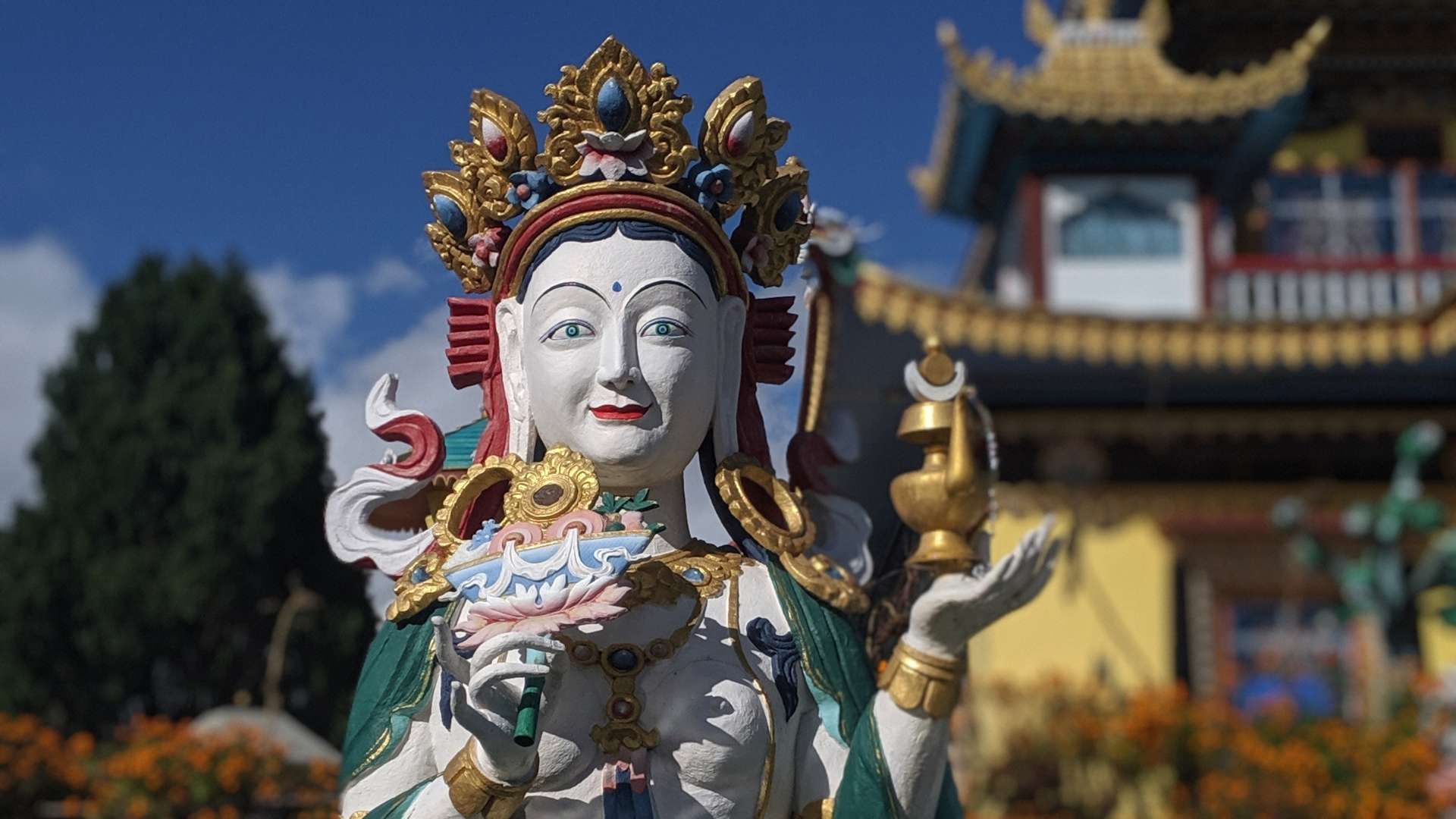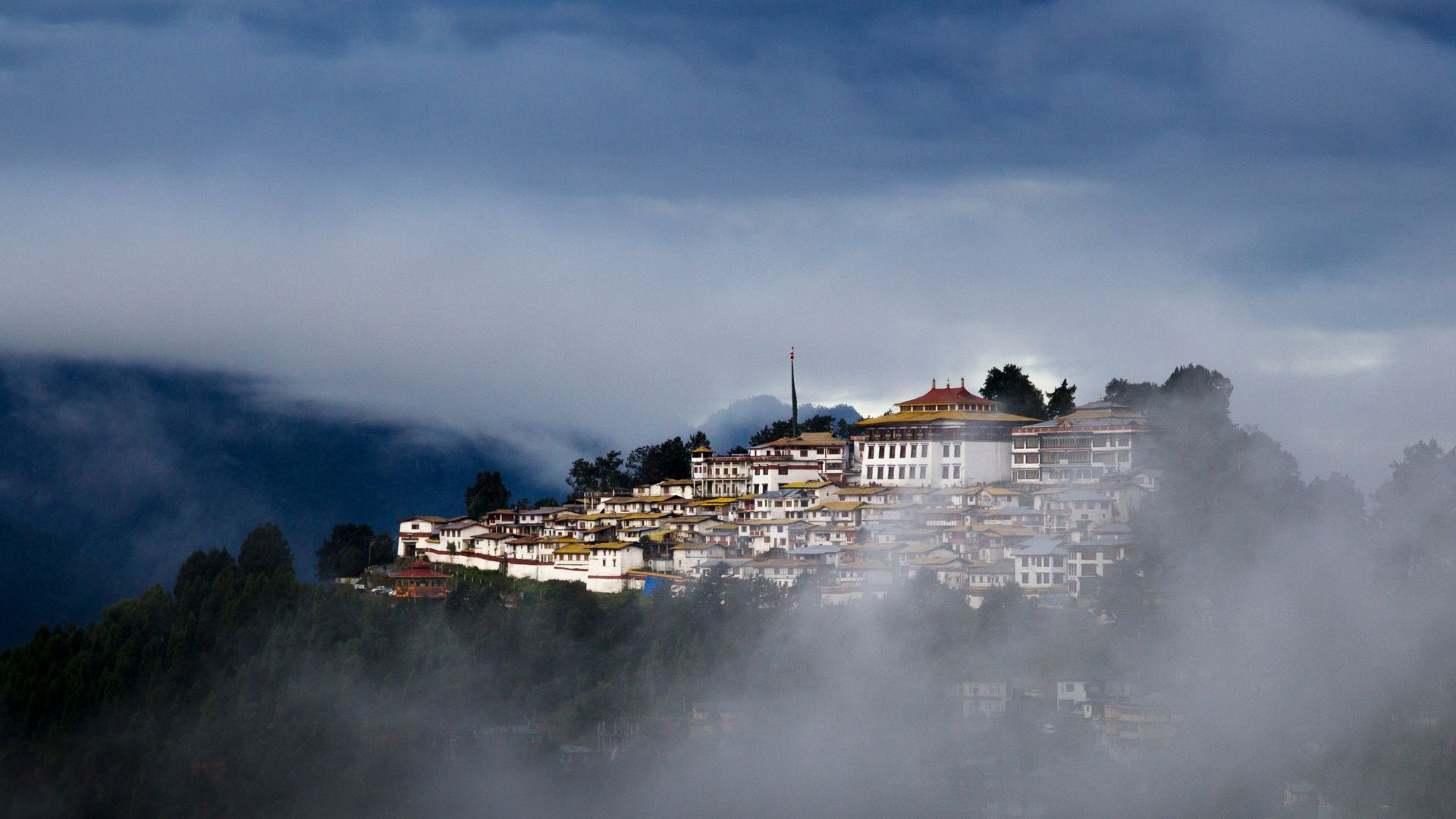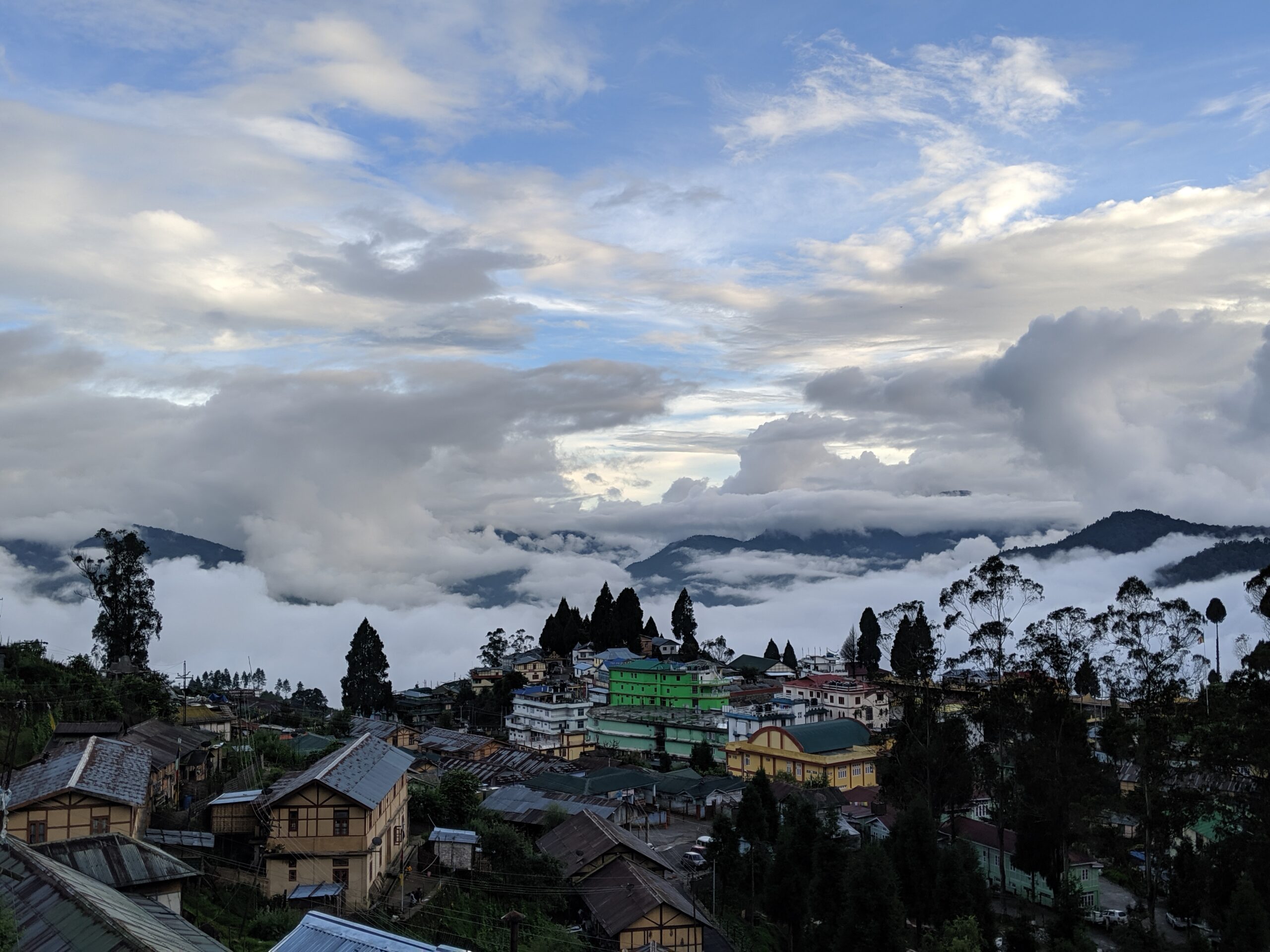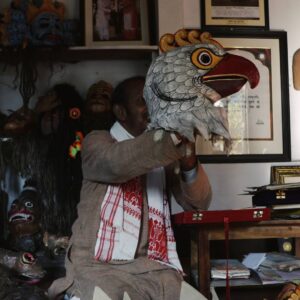
Arunachal Pradesh is the largest state in India’s North East Region (NER) and shares its borders with Bhutan, China and Myanmar. Undoubtedly, the cultural diversity in the state is unimaginable – majority of the population share close cultural and religious affinities with Tibet with over a dozen tribal communities following Theravada or Mahayana Buddhism (around 13% of the total population in the state). The Monpas, the Membas and the Sherdukpen tribes follow Mahayana Buddhism while the Singphos, the Khamtis and Tikhak Tangsas among others follow the Theravada school of Buddhism. It is important to note that while these tribes may follow different forms of Buddhism, they also have their own distinct cultures and traditions.
Theravada and Mahayana Buddhism in Arunachal Pradesh
Mahayana and Theravada are two major traditions within Buddhism, with significant differences in doctrine, practice, and culture. Theravada Buddhism is one of the two major branches of Buddhism, along with Mahayana Buddhism. Theravada Buddhism, also known as “Southern Buddhism,” is the dominant form of Buddhism in Southeast Asia and Sri Lanka. It is based on the teachings of the historical Buddha and emphasizes individual spiritual progress and the attainment of enlightenment through one’s own efforts.
Mahayana Buddhism, also known as “Northern Buddhism,” is the dominant form of Buddhism in East Asia and is characterized by a greater emphasis on the role of the bodhisattva, a being who is dedicated to helping others achieve enlightenment. Mahayana Buddhism also places a greater emphasis on the use of ritual and devotional practices in the path to enlightenment.
Theravada and Mahayana Buddhism is practiced globally and are distinguished by their different approaches to the path to enlightenment while the four sects of Tibetan Buddhism (Nyingma, Kagyu, Sakya, and Geluk) are specific to Tibetan Buddhism and are based on different teachings and lineages.
Tawang and West Kameng districts of western Arunachal Pradesh are collectively known as Monyul, a Tibetan-origin term meaning ‘lowland’ (mon means ‘low’ and yul means ‘land’ or ‘settlement’). Previously, Monyul referred to all low-lying territories in the Tibetan borderlands, and Monpa referred to the people living in the lowlands. It was ruled by Tibet for three centuries before the 1914 McMahon Line boundary included it in India. Currently, Monyul is mainly used to refer to the westernmost districts of Arunachal Pradesh. The region is dominated by two of the four orders of Tibetan Buddhism – the Geluk and Nyingma sects.

The Geluk and Nyingma Sects of Tibetan Buddhism
The Geluk and Nyingma sects are two of the four major schools of Tibetan Buddhism. The Geluk sect, also known as the Yellow Hat sect, was founded in the 14th century by Tsongkhapa, a Tibetan Buddhist monk and philosopher. The Nyingma sect, also known as the Ancient Ones, is the oldest of the four schools and was founded in the 8th century by the Tibetan saint Padmasambhava.
One of the main differences between the Geluk and Nyingma sects is their approach to the study and practice of Tibetan Buddhism. The Geluk sect emphasizes a systematic and logical approach to study, with a strong emphasis on monasticism and the study of philosophical texts. The Nyingma sect, on the other hand, emphasizes a more intuitive and experiential approach to practice, with a strong emphasis on meditation and the use of tantric techniques.
Another difference between the two sects is their view of the historical development of Tibetan Buddhism. The Geluk sect believes that the teachings of the Buddha were transmitted in an unbroken line from the historical Buddha, through a series of Indian and Tibetan masters, to Tsongkhapa, the founder of the Geluk sect. The Nyingma sect, on the other hand, believes that the teachings of the Buddha were concealed by Padmasambhava in the 8th century and were later rediscovered by Tibetan masters.
Overall, the Geluk and Nyingma sects are two of the major schools of Tibetan Buddhism, but they differ in their approach to the study and practice of the religion, as well as in their view of its historical development.Here we explore some iconic monasteries of these two sects that have survived decades of national border politics, change of socio-religious power and continuous development :

GELUKPA SECT MONASTERIES
Gaden Namgyal Lhatse Monastery in Tawang
Tawang is an important seat of Mahayana Buddhism famous for Tawang Monastery of the Gelukpa founded by Mera Lama Lodre Gyamtso during the 17th century, and a contemporary of the 5th Dalai Lama. Subsequently after its establishment, it became a centre for spiritual and political power house of Mon, which was directly governed by Lhasa. The monastery was established as a Gelug military outpost in the sectarian wars with other buddhist sects in the region and Bhutan and played an important role in defending Tibet’s frontier when foreign incursions came. It still holds an association with the Drepung Monastery in Lhasa today. Currently the second largest Monastery in Asia and the largest one of its kind in India, it manages the religious affairs of 17 Gompas in the region. The monastery is known for its beautiful architecture, including its main prayer hall, which is decorated with intricate murals and statues of Buddhist deities. The most imposing part of the Monastery is the three storied assembly hall (du-khang) which houses the temple and the 28 Ft high Golden Statue of Buddha. The monastery also houses a big library (par-khang) having an impressive collection of ancient books and over five thousand rare Mahayana Buddhist manuscripts including the famous Buddhist scriptures Kangyur and Tangyur inscribed in gold. The Centre for Buddhist Cultural Studies is the chief structure in the monastery where resident young monks receive their traditional monastic education. The Tawang Monastery is an important religious and cultural centre for the people of the region, and it is visited by thousands of pilgrims and tourists each year. Visitors to the monastery can learn about its history and teachings, explore its beautiful grounds, and participate in its religious ceremonies and Monpa festivals.
IMPORTANT DATES AND CELEBRATIONS:
- Losar Festival - The Tibetan New Year celebrated in late February-Early March.
- Torgya Festival - Tawang-Torgya, celebrated to pay homage to Lama Tsongkhapa, is held exclusively in the Tawang Monastery on 10-12 January every year.
- Choksar - Choksar is the festival when the Lamas recite religious scriptures in the monasteries.
REACHING TAWANG MONASTERY:
Gontse Gaden Rabgye Lling Monastery in Bomdila
The Bomdila Monastery is situated in the Western Kameng District of Arunachal Pradesh and was built by the 12th reincarnate of Tsona Gontse Rinpoche in 1965–66 and blessed by the 14th Dalai Lama.
The main Gompa has three divisions, namely, the Lower Gompa located in the heart of Bomdila, the Middle Gompa and the Upper Gompa. The Upper Gompa is considered to be the main monastery and a learning centre for young monks. The Lower Gompa is situated at the end of the main market area and it depicts the influence of Tibetan architecture. The Middle Gompa, houses the Blue Medicine Buddha, which is also known as the Lord of Medications and is believed to cure diseases by the locals.
During festivals, one can see mandalas made in sand. After the festivities, monks mess up the detailed design as a symbol of their belief in the impermanence of life. It’s located at 8,500 feet above sea level, and shares close resemblance with Tsona Gontse Monastery in South Tibet.

REACHING BOMDILA MONASTERY
Bomdila is 340 km from Guwahati and the nearest airport is in Tezpur, approximately 4 hours away by road. Public transport such as buses and taxis are readily available in all towns connecting to Bomdila.
Thupsung Dorgeylling Monastery in Dirang
Dirang is a small town in West Kameng at an altitude of 4,911 feet, situated between Tawang and Bomdila. The Thupsung Dhargye Ling monastery is a recently built, beautifully decorated Buddhist monastery in the hills on the west of new Dirang, overlooking the Dirang Chu River. The name, Thupsung Dhargye Ling was given by His Holiness, the Dalai Lama upon its consecration in 2017 and it means: “Place of Flourishing of the Buddha’s Speech”. The top floor holds the prayer hall with sitting arrangements for meditation for the monks and the general public. It currently also serves as a learning institute for the study of Tibetan Buddhism for monks and the uninitiated alike. The Monastery gives a tremendous 360 panoramic view of Dirang Valley and the mountains – the Indo Tibetan Border Force camp is also visible on the opposite hilltop. The best time to visit is at sunrise, when the monks perform their daily prayers at 6 AM.
REACHING DIRANG MONASTERY
Dirang is well connected by road, falling en-route from Bomdila to Tawang and it is the best way to reach the town. The closest airport is in Guwahati, 311km away.
NYINGMA SECT MONASTERIES
Apart from the popularity of the Geluk school in western Arunachal Pradesh, there were numerous followers of the Nyingma school of Tibetan Buddhism. This was because of Nyingma master Uygen Sangpo, who came to Monyul to establish his lineage. Uygen Sangpo built several Nyingma monasteries in Monyul and because of this the Nyingma school of Tibetan Buddhism flourished in different corners of Monyul. Here are some monasteries of the Nyingmapa sect:
Khinmey Monastery in Tawang
Also known as Sang-ngag-choekhorling, Khinmey Monastery was founded by Rev. Kundun Sange Yeshe, the first Thegtse Rinpoche in the year 1440 AD making it the oldest monastery in Tawang. The name Khinmey comes from the Monpa word Khi-Ket-Nyan-Mey, literally meaning a place for listening to the sound of barking dogs. At present, more than hundred monk students from Monpas, Bhutanese and Indian Nepalese communities have been studying both the ancient Buddhist classics and modern subjects under the guidance of the Thegtse Rinpoche, considered he 14th reincarnation of the guru who founded it.
IMPORTANT DATES:
The Tse Chu Festival is held in June every year, commemorating the birth of Guru Padmasambhava. The religious Cham dance is performed by masked dancers depicting the Guru’s different manifestations through the dance. Locals and other people are welcome to witness and take part in the celebrations.The Tse Chu Festival is held in June every year, commemorating the birth of Guru Padmasambhava. The religious Cham dance is performed by masked dancers depicting the Guru’s different manifestations through the dance. Locals and other people are welcome to witness and take part in the celebrations.
REACHING THE MONASTERY:
The Khinmey Nyingma Monastery is located in Khinmey village, 9km by vehicle/6km on foot, east of Tawang town.
Sang ngang Choekhar Dargyeling or Chilipam Monastery

BONUS MENTIONS:
Urgelling Monastery in Tawang
Urgyelling is the birth place of Tsangyang Gyatso, the sixth Dalai Lama, located about five kilometres southeast of Tawang town. It was established in the year 1487 AD, the Monastery is one of the first three monasteries built by Urgen Sangpo – a close disciple of Tsongkhapa (who is the founder of the Gelug sect ).
The colourful structure of the new establishment houses a double storied main temple, eight pillared assembly hall, a four pillared altar room, a two pillared chapel of protective deities, a residential quarters for the sixth Dalai Lama , a Ka-gyur house, a chapel for the practice of new Tantra, a huge courtyard with twenty pillars and twenty rooms for the monks.
IMPORTANT DATES:
Every year on the 6th of July, the birthday of the 14th Dalai Lama is celebrated with great fanfare at the Gompa, by the locals.
REACHING THE MONASTERY:
Urgelling is located around 8k from central Tawang and easily accessible through taxis and cabs.
Tips when visiting the Monasteries
- Avoid visiting during lunch times, when the monasteries will remain closed.
- Make sure to request a monk to show you around the monastery to better understand the history, art, architecture and the unique stories and legends surrounding the monasteries.
- Stay warm if visiting during the winters. Carry a light jacket during the spring and summer months as the weather can change any time and temperatures can drop during cloudy days.
- Many of the monasteries have guesthouses attached within their complex so make sure to ask if you wish to spend a serene and calm night.
- Buddhist pilgrims walk clockwise around the monastery and monuments and the same must be respected by visitors. Even the spinning of the Buddhist prayer wheels is done clockwise.
- The lighting of butter lamps is a ritualistic and symbolic practise in Buddhism. One must first wash their hands and wear a mask in order to avoid contaminating the sanctity of the lamp. This meditative offering to Buddha is accompanied by a prayer.

Team ChaloHoppo
Anali Baruah writes on culture and tourism in north eastern regions of India. She is currently doing her PhD in Cultural Studies and works with Content & Research at ChaloHoppo.
Explore Western Arunachal Pradesh with our Group trips
NER / ADVENTURE
NER / ADVENTURE






